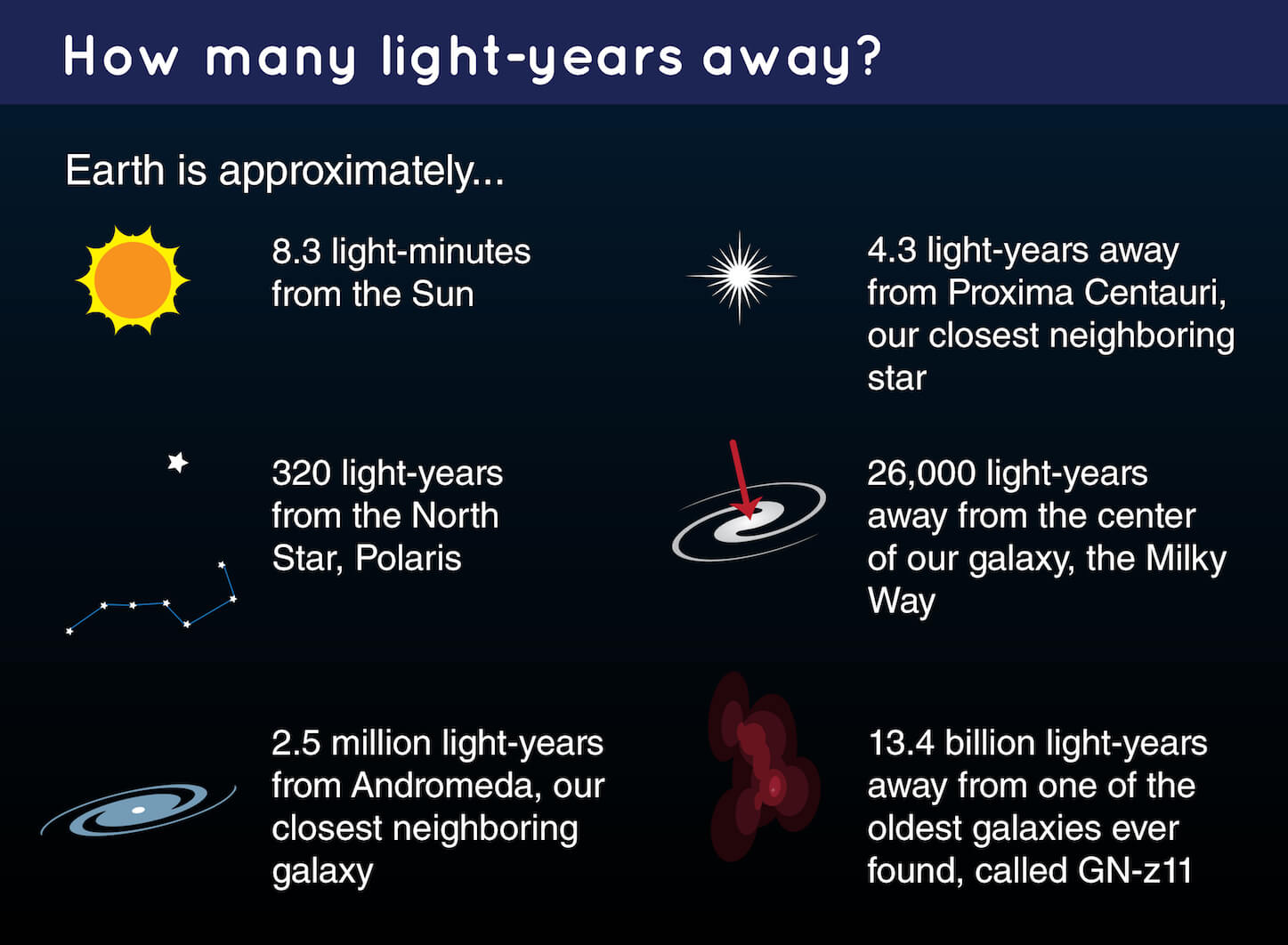Light year is a unit and measure of very long distances. Because year is a unit of time, sometimes people mistake a light year also to be related with time. But, of course, that is not true! Light year is defined as the distance that light travels in one year’s time. It’s very easy to calculate the value of a light year. Just multiple the speed of light with the amount of time. So, exactly how long is a light year?
- One light year = 9,460,730,472,580,800 meters (exactly)
- One light year = 9,460,000,000,000 kilometers or 9.46 trillion kilometers (approx.)
- One light year = 5,880,000,000,000 miles or 5.88 trillion miles (approx.)
Speed of light in vacuum is 299,792,458 meters per second. A Julian year is 31,557,600 second long. So, if we multiply these two values we will get the length of a light year.
Definition: Light year is the distance that light travels in vacuum in one Julian year.
The unit of light year is very important as well as very interesting. The size of our universe and space around us is so huge that it becomes impractical to use our regular distance-measuring units like kilometers. Light year saves us the trouble of remembering a great number of digits. Imagine remembering 9,460,000,000,000 kilometers! Instead it’s much easier to simply use one light year!
Example use of Light Year
For educational purpose and writing popular science stuff, all the astronomical / galactic distances are represented in light year. However, the professional astronomers use parsec — an even more condensed unit of distance. One parsec is equal to 3.26 light years.
The astronomical unit (AU) is a unit of length, roughly the distance from Earth to the Sun. One astronomical unit is equal to exactly 149,597,870,700 meters (about 150 million km or 93 million miles). One light year is equal to 63241.077 astronomical units.
After the Sun, Proxima Centauri is the nearest star to our planet Earth. Proxima Centauri is 4.35 light-years away from us. This means that light emanating from Proxima Centauri will take 4.35 years to reach Earth. As a result, what we see of this star is actually how it was 4.35 years ago! Basically, we see the past of Proxima Centauri. In other words, now Proxima Centauri is not exactly how it appears to us.

This example should be enough to demonstrate the vastness of the space around us. This also tells us why light-year as a unit is important. This unit can easily express massive numbers and also it is easy for masses to understand. In contrast, astronomical unit would be a bit difficult for everyone to understand.
Use the citation below to add this article to your bibliography
"Light Year: Meaning, Definition, Unit of, Measure of." Dashamlav.com. Web. 13 June 2025. <https://dashamlav.com/light-year-unit-value-meaning-definition-measure/>
Dashamlav.com, "Light Year: Meaning, Definition, Unit of, Measure of." Accessed 13 June 2025. https://dashamlav.com/light-year-unit-value-meaning-definition-measure/
"Light Year: Meaning, Definition, Unit of, Measure of." (n.d.). Dashamlav.com. Retrieved 13 June 2025 from https://dashamlav.com/light-year-unit-value-meaning-definition-measure/
